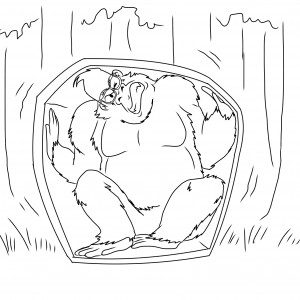“Before thinking outside the box, think how you might make your box bigger?”
John Brooker
Understanding and widening the boundaries of a situation can help you to create more options and better solutions…
I took my daughter to compete in the second round of an inter school public speaking competition organised by the Rotary Club. Teams of children, made a speech (no visuals allowed!) to an audience of around sixty people, about a topic of their choice. One introduces the topic and speaker, the second presents the case and a third gives thanks.
This is a great challenge for the children and provides an element of entertainment as well as some thoughtful points.
During a talk on “Breaking the Mould”, which challenged conventional thinking about small people, one girl in her introduction mentioned that phrase so often heard in the same breath as creativity, “Think outside the box”. She set me thinking.
In my world, when setting outcomes with the group on a creativity course, people say regularly that this is what they want to be able to do.
My normal response is that “thinking outside the box” is a fair outcome. Could they also make the box bigger?
This question usually produces confusion and no wonder, as “think outside the box” derives from the old nine dot puzzle of how to connect all nine dots with a single unbroken line. No matter how big you make that box, you are still going to have to go outside the box to obtain a result. So to avoid confusion, let me explain that in my response, I mix box metaphors.
My metaphorical box is big enough to stand in and has four walls. I tell participants that it is sometimes our own “rules” and assumptions that build the walls around an issue and limit the prospect of an optimal solution.
By challenging these rules and assumptions we can widen our thinking about the situation, metaphorically make the box bigger and so allow room for more options, before we “think outside the box”.
So
The competition speech proceeded and the second speaker, a small boy, explained his reasons why people should view small people differently. He mentioned prejudice, which sparked off further thinking about my box metaphor.
It occurred to me that each wall could individually represent something that inhibits us when tackling an issue. Having forgotten my notebook I sketched out on the event programme my thoughts on the “walls” that limit us:
- We apply “rules” from previous situations that may not apply in this new situation
- We make assumptions that may be unfounded
- And the two additional ones the boy’s speech triggered were:
- We bring our own prejudices to the situation
- We bring our egos (he mentioned Napoleon and Hitler)
If we are to tackle situations more effectively, we have to surface these rules and assumptions, overturn our prejudices and suppress our egos.
Driving home it occurred to me that my box had another “wall” above; the “ceiling”. I concluded that this represented taking our own narrow perspective on the situation.
How can we move that wall and the others I have identified? A great place to start is to involve as many other people as possible in exploring the situation. They challenge our rules, our assumptions, our prejudices and egos so that we can widen the boundaries and find that better solution.
Action
- Think about my box metaphor. Are there any other factors that build walls?
- Think about a challenge you have at present. How might you push back your “walls” and make your box bigger?
To Close
Having done an admirable job on a difficult topic, my daughter’s team did not get through to the next round of the competition (deservedly, the “Breaking the Mould” team did).
This was disappointing but it was a great development tool for her and an excellent model that companies could adopt to challenge conventional thinking and encourage creativity.
The team approach helps improve cross functional cooperation, the audience helps to spread ideas across the company and it costs nothing. If you would like some ideas on how you might establish it, please send me an e-mail.
Have a great week. If you know anyone who would like the event programme on the slight chance that I might become famous, let me know
John Brooker I Yes! And. Think Innovatively.
To receive regular articles, register at our website: www.yesand.eu and receive Section 1 of John’s book, “Innovate to Learn, Don’t Learn to Innovate”, with our compliments. We guarantee not to share your details. Or you might buy John’s book at Amazon now: “Innovate to Learn, Don’t Learn to Innovate.”

